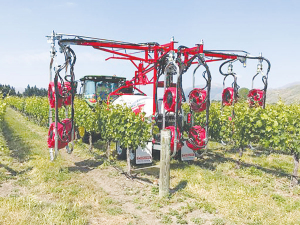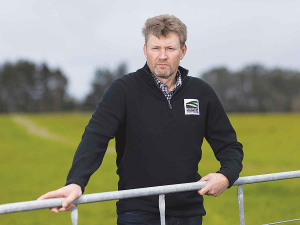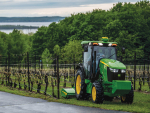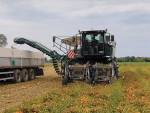A free online tool that helps growers manage risks associated with agrichemical use on their land has received a significant upgrade.
The new SprayPlan manager has better functionality and a powerful new mapping system to help identify environmentally sensitive areas.
Developed by Kiwi agritech company HortPlus, the system makes it simple for farmers and growers in any industry to identify environmentally sensitive areas and create easy-toupdate digital spray plans that comply with council regional air quality plans.
The Growsafe Endorsed tool helps enable best practice by providing information about agrichemicals and any hazards they pose. Documenting their use helps growers demonstrate their commitment to the Global Good Agricultural Practices (Global GAP) certification scheme.
“We’re delighted to support a free tool that moves the industry forward by helping farmers and growers to effectively plan and implement responsible and sustainable spraying practices on their land,” HortPlus director Mike Barley says.
“SprayPlan Manager is a must have for any grower who wants to streamline their compliance processes while ensuring the health and safety of their workers and making a meaningful difference to the environment at the same time.”
The latest version of the platform is a complete rebuild of the original version built by HortPlus in collaboration with Plant & Food Research in 2008, as part of a larger pesticide risk reduction project funded through the Government.
The new version enables better mapping and product lookup, as well as a risk assessment module. It is used annually by more than 1,000 growers across more than 30 crop types.
The new system’s development followed feedback from users, including Andy Mawley, an experienced agrichemical spraying contractor and educator, who teaches responsible spraying practises to growers and farmers across New Zealand through his business ProActive Education.
SprayPlan Manager is supported by New Zealand Wine and Croplands Equipment as a free pansector tool for growers.
HortPlus received funding support from Callaghan Innovation to assist with development of the latest re-build.
The project was also enabled by a team of final year software engineer students from Waikato University who helped provide development support.
SprayPlan Manager is free to all growers and farmers and can be accessed at www. sprayplan.nz
More Than A Tick Box Exercise
Andy Mawley saw an opportunity with SprayPlan Manager to move growers and farmers from simply “ticking the box” when spraying to proactively thinking about how they could do it in the best way possible.
He wants them to practice spraying for health, safety and the environment’s benefit.
“There was nothing else like that I could find globally. I figured if it could be done it would be an invaluable resource for all growers, along with industry bodies like Zespri and NZ Wine and every regional council across the country.”
Mawley says the new NZS8409: Management of Agrichemicals standard was released by Standards New Zealand last year.
“Many councils were now updating their regional air quality plans to require growers in their region to have a spray plan in place.”
He adds that while modern agrichemical sprays were typically “softer” on the environment than those used in the past, climate change pressures and the emergence of new pests and diseases has required use of greater quantities of sprays in many areas.
“The increase in rural subdivisions is another factor that means that spray plans are becoming more important for New Zealand growers and their neighbours.”
Mawley says SprayPlan Manager makes it easy to create and maintain a plan.
“You can spray the most sensitive areas on your land at the most appropriate times, while considering weather conditions and spray drift, getting the job done quicker, and using the right quantity of spray,” he explains.
“I find the new maps and features built into the tool really interactive – if you involve your team in the planning process early and they understand how sprays can affect their health and the environment, they are much more likely to manage the risk.”


















